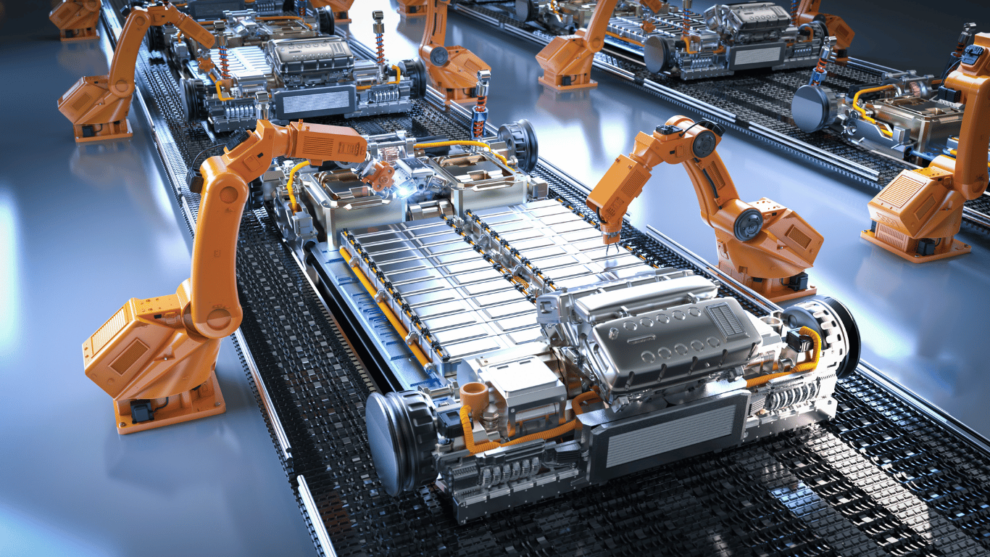Massachusetts Institute of Technology researchers have unveiled groundbreaking technology that fundamentally reimagines metal processing, potentially revolutionizing manufacturing across multiple industries. The innovative approach, developed by a team led by Professor Sarah Chen at MIT’s Department of Materials Science and Engineering, promises to dramatically reduce energy consumption while improving material quality and processing efficiency.
The breakthrough centers on a novel electromagnetic manipulation technique that allows for precise control over metal crystallization during processing. Traditional metal manufacturing methods rely heavily on heat-intensive processes that consume significant energy and often result in inconsistent material properties. MIT’s new approach utilizes carefully calibrated electromagnetic fields to guide metal crystallization at the molecular level, resulting in more uniform and stronger materials while operating at lower temperatures.
What makes this technology particularly exciting is its potential to transform both the economics and environmental impact of metal processing,” explains Professor Chen. “By reducing the energy requirements and improving material consistency, we’re looking at a significant advancement in how industries approach metal manufacturing.” The research team estimates their method could reduce energy consumption by up to 60% compared to conventional processing techniques.
The technology’s development emerged from an unexpected observation during an unrelated experiment involving electromagnetic fields and liquid metals. Graduate student Marcus Thompson, one of the study’s co-authors, noticed unusual crystallization patterns that led the team to investigate the phenomenon further. “Sometimes the most significant breakthroughs come from paying attention to unexpected results,” Thompson notes. “What we initially thought was an experimental anomaly turned out to be a gateway to an entirely new processing method.”
Industrial applications for the technology span numerous sectors, from automotive manufacturing to aerospace components. Early testing demonstrates that processed materials exhibit superior strength-to-weight ratios and enhanced durability compared to traditionally manufactured metals. These improvements could lead to lighter, more efficient vehicles and aircraft, contributing to reduced fuel consumption and lower carbon emissions across multiple industries.
The research team collaborated with several major manufacturing companies during development to ensure the technology’s practical applicability. David Rodriguez, chief manufacturing officer at Advanced Materials Corporation, who wasn’t involved in the research but has reviewed the findings, describes the potential impact as “transformative” for the industry. The ability to precisely control metal crystallization while significantly reducing energy consumption represents a major leap forward in manufacturing technology,” Rodriguez explains.
Beyond the immediate industrial applications, the technology shows promise for enabling the development of new metal alloys with previously unattainable properties. The precise control over crystallization patterns allows researchers to experiment with novel material combinations and structures that weren’t possible using traditional methods. This capability could lead to the creation of materials specifically engineered for emerging technologies in renewable energy, space exploration, and advanced computing.
Environmental implications of the technology are particularly noteworthy. The reduced energy requirements and improved processing efficiency could significantly lower the carbon footprint of metal manufacturing operations. Additionally, the more precise control over material properties could reduce waste by minimizing defects and improving yield rates. These environmental benefits align with growing industrial initiatives to reduce manufacturing’s environmental impact while maintaining or improving product quality.
The technology’s development also addresses critical supply chain concerns in the manufacturing sector. By enabling more efficient processing and potentially allowing for smaller-scale operations, the technology could help decentralize metal manufacturing capabilities. This flexibility could prove particularly valuable in reducing dependence on centralized manufacturing facilities and improving supply chain resilience.
MIT’s Office of Technology Licensing is currently working with industrial partners to scale the technology for commercial applications. Early pilot programs have demonstrated promising results, with several manufacturers reporting successful integration into existing production lines. The scalability of the technology represents a crucial advantage, as it can be implemented gradually without requiring complete overhauls of existing manufacturing infrastructure.
Looking ahead, the research team is exploring additional applications and refinements of the technology. Current development focuses on expanding the range of materials that can be processed using the new method and further optimizing energy efficiency. The team is also investigating potential applications in recycling and reprocessing of metals, which could contribute to more sustainable material use in manufacturing.
The timing of this technological breakthrough coincides with increasing industrial focus on sustainability and efficiency. As manufacturers worldwide seek solutions to reduce energy consumption and improve material performance, MIT’s innovation offers a promising path forward. The combination of environmental benefits, improved material properties, and potential cost savings positions this technology as a significant advancement in modern manufacturing.
As industrial partners begin implementing the technology, the research team emphasizes the importance of continued development and refinement. “While we’re excited about the current capabilities, we believe we’ve only scratched the surface of what’s possible with this approach,” Professor Chen concludes. The ongoing research promises to yield additional improvements and applications, potentially reshaping the future of metal manufacturing across global industries.
















Add Comment